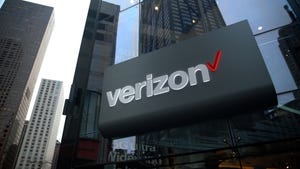Could FiOS Trump Docsis 3.0?
North American cable operators could soon find themselves outgunned by Verizon's emerging fiber business

Despite pouring more than $100 billion into upgrading their hybrid fiber-coax (HFC) networks over the past decade, North American cable operators could soon find themselves outgunned by Verizon Communications Inc. (NYSE: VZ)'s emerging fiber-to-the-premises (FTTP) network, according to a new report.
The latest Cable Industry Insider report from Light Reading compares the competing technological visions of the cable industry and its most threatening telco rival. Most notably, it concludes that Verizon's new FiOS service will likely provide much more shared bandwidth than even the cable industry's new Docsis 3.0 technical standard from Cable Television Laboratories Inc. (CableLabs) .
"By most accounts, FiOS wins the bandwidth battle against Docsis 3.0 hands down, a point that even the most partisan cable engineers and strategists usually concede," the report says. "Using its existing BPON architecture, Verizon is able to offer shared bandwidth of 622 Mbit/s downstream and 155 Mbit/s upstream, divided among no more than 32 homes."
By the same token, the report concludes that Verizon will probably deliver much faster broadband speeds with FiOS than cable operators could ever hope to match, even with the adoption of the Docsis 3.0 specifications. Although the new Docsis standard will enable MSOs to offer shared data speeds as high as 160 Mbit/s downstream and 120 Mbit/s upstream, it says, FiOS has the capability to offer even higher speeds because of its superior network capacity.
"Thanks to a clear advantage on the overall bandwidth front, FiOS easily beats cable's best in the data speed department," the report states. "With the introduction of Docsis 3.0, cable operators will be able to deliver far greater speeds to customers than they do today. But, due to the basic bandwidth gap, they still won't be able to offer the same potential speeds as FiOS."
Highlighting another key metric in FiOS's favor, the report finds that Verizon's growing FTTP network will cost less to operate and maintain than the cable's industry's comparative hybrid fiber-coax (HFC) plant because of the telco's reliance on passive optical networking (PON) technology. With PON, an outside plant requires no electronics, unlike the cable industry's plant.
In one other advantage for the Verizon service, FiOS has a big headstart on Docsis 3.0 on the deployment front, according to the report. Plans call for the FiOS suite of services to pass 6 million homes by the end of this year and 12 million by the close of 2008. In contrast, the report says, cable operators probably won't be able to start introducing Docsis 3.0 systems and gear en masse until 2008 at the earliest.
But don't count out Docsis 3.0 just yet, the report says. Once Docsis 3.0 products finally start churning off the assembly lines, it states, cable operators should quickly begin to catch up to Verizon because no new cable plant need be built to deploy the new equipment.
"Docsis 3.0 will undoubtedly be almost ubiquitous in cable systems by 2010 or 2011, just as Docsis 2.0 is today," the report says. "Thanks to this rollout and cable's huge installed base, which is at least twice as large as Verizon's, Docsis 3.0 will end up reaching far more homes than FiOS over the next few years."
Also in the cable industry's favor, the report asserts that Docsis 3.0 should run up much lower deployment, connection, equipment, and services expenses for MSOs than FiOS is already racking up for Verizon. For example, Verizon reports that it now costs more than $1,800 to serve each FiOS customer -- far more than it should cost cable operators to serve each Docsis 3.0 subscriber, because of the great expense of building the new FTTP network and installing set-top boxes, modems, and other equipment in every FiOS home.
In addition, the report gives a big nod to cable in the installed plant category. With a current base of 65.5 million basic subscribers, it notes, cable operators reach far too many homes for Verizon to ever catch up, short of merging with rival AT&T Inc. (NYSE: T).
The report ranks the two industries evenly on the services that their new technologies enable, at least for the moment. But it points out this category could shift in Verizon's favor as more bandwidth-intensive applications evolve.
"Docsis 3.0 vs. FiOS: Tale of the Tape" is available as part of an annual subscription (six monthly issues) to Light Reading's Cable Industry Insider, priced at $1,295. Individual reports are available for $900.
— The Staff, Light Reading
Read more about:
OmdiaAbout the Author(s)
You May Also Like












